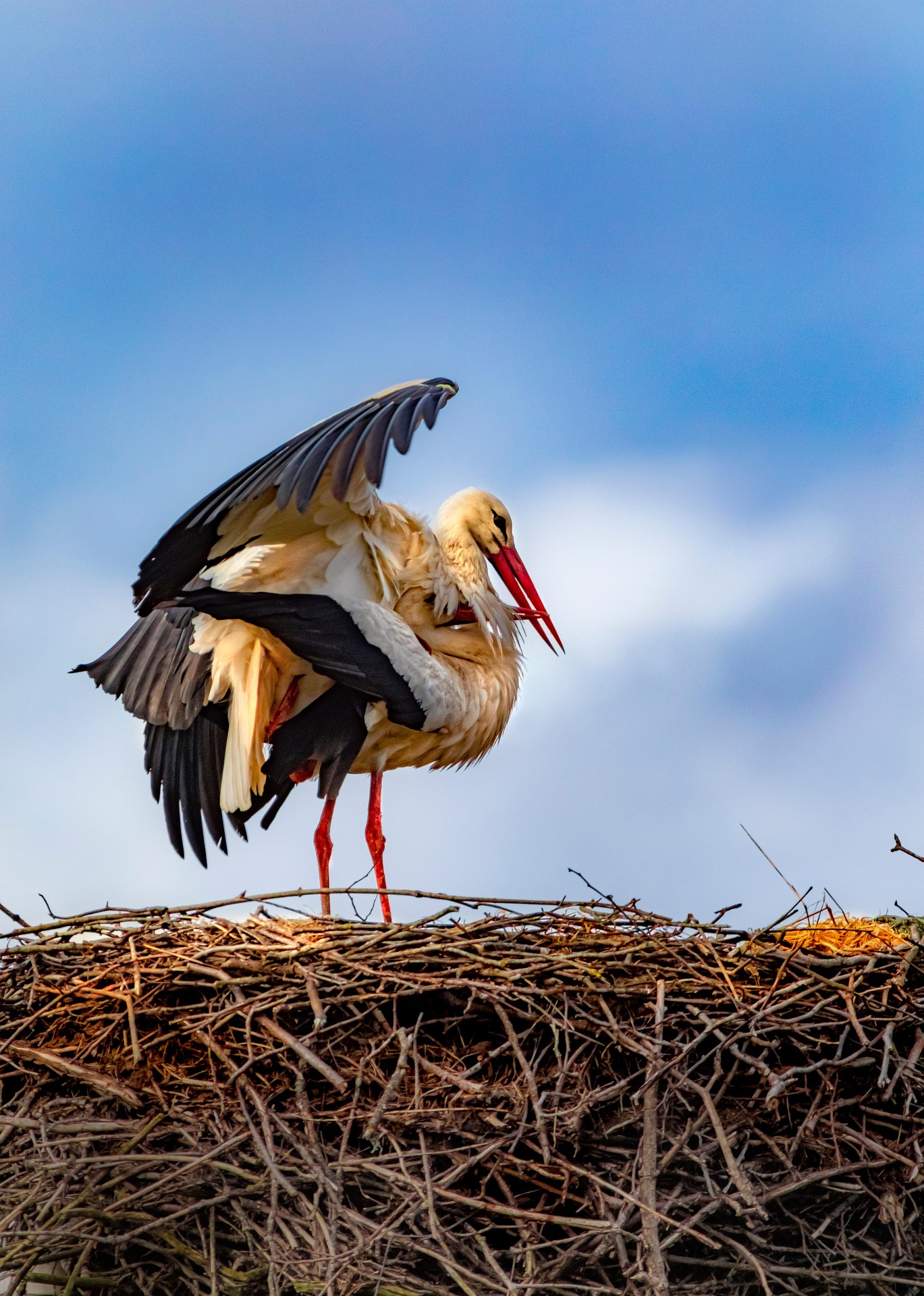🕊️
The White Stork is one of Europe’s most iconic and recognizable birds, known for its graceful appearance, tall stature, and cultural symbolism of good luck and fertility. With its large wingspan and long migratory journeys, the White Stork is a true symbol of the changing seasons in many parts of Europe, Asia, and Africa.
🔍 Identification
- Size:
- Height: ~100–115 cm
- Wingspan: ~155–215 cm
- Weight: 2.5–4.5 kg
- Plumage:
- Body: Pure white
- Wings: Black flight feathers
- Bill and Legs: Long and bright red
- Call:
- Generally silent; communicates by bill-clattering, especially during courtship or territorial displays
🌍 Distribution & Habitat
- Breeding Range:
- Across Europe, Northwest Africa, and parts of Western and Central Asia
- Wintering Grounds:
- Sub-Saharan Africa, India, and the Middle East
- Preferred Habitat:
- Open farmlands, meadows, wetlands, and village rooftops
- Nests in areas near shallow water, which provide abundant feeding opportunities
🐣 Breeding & Nesting
- Nesting:
- Large platform nests, built from sticks, often reused and enlarged annually
- Commonly found on chimneys, rooftops, towers, or trees
- Breeding Season:
- Spring through early summer
- Clutch Size:
- Typically 3–5 eggs
- Both parents incubate the eggs and feed the chicks
🍽️ Diet
- Opportunistic feeder, primarily carnivorous
- Eats:
- Insects, earthworms, amphibians, small mammals, birds, reptiles, and fish
- Occasionally scavenges
- Forages in wet meadows, fields, and marshes
🧭 Migration
- Strongly migratory
- Forms large flocks during migration
- Avoids crossing large bodies of water, instead following land routes like the Gibraltar or Bosporus straits
🌟 Cultural Significance
- Featured in mythology and folklore throughout Europe
- Traditionally associated with fertility and newborns—the origin of the stork delivering babies myth
- Considered a symbol of good fortune
✅ Conservation Status
- IUCN Red List: Least Concern
- Population: Increasing in many regions due to conservation efforts and artificial nesting platforms
- Threats include habitat loss, pesticides, and power line collisions
📌 Summary
The White Stork (Ciconia ciconia) is a majestic and familiar sight across Europe and beyond, known for its elegant flight, towering nests, and long migratory journeys. With a strong cultural presence and an increasing population in many areas, it stands as both a conservation success story and a living symbol of seasonal change and hope.
Visited 37 times, 1 visit(s) today
Views: 403
Subscribe to the newsletter:
